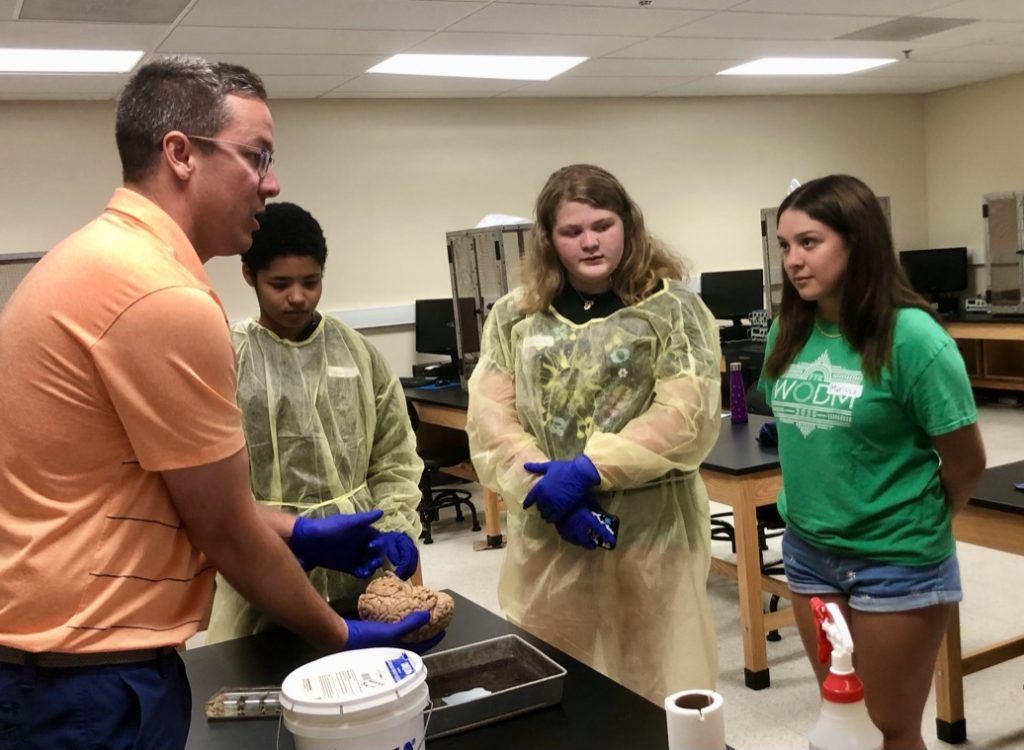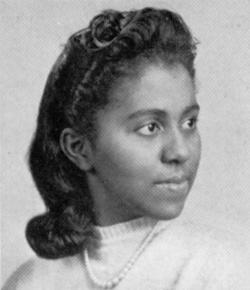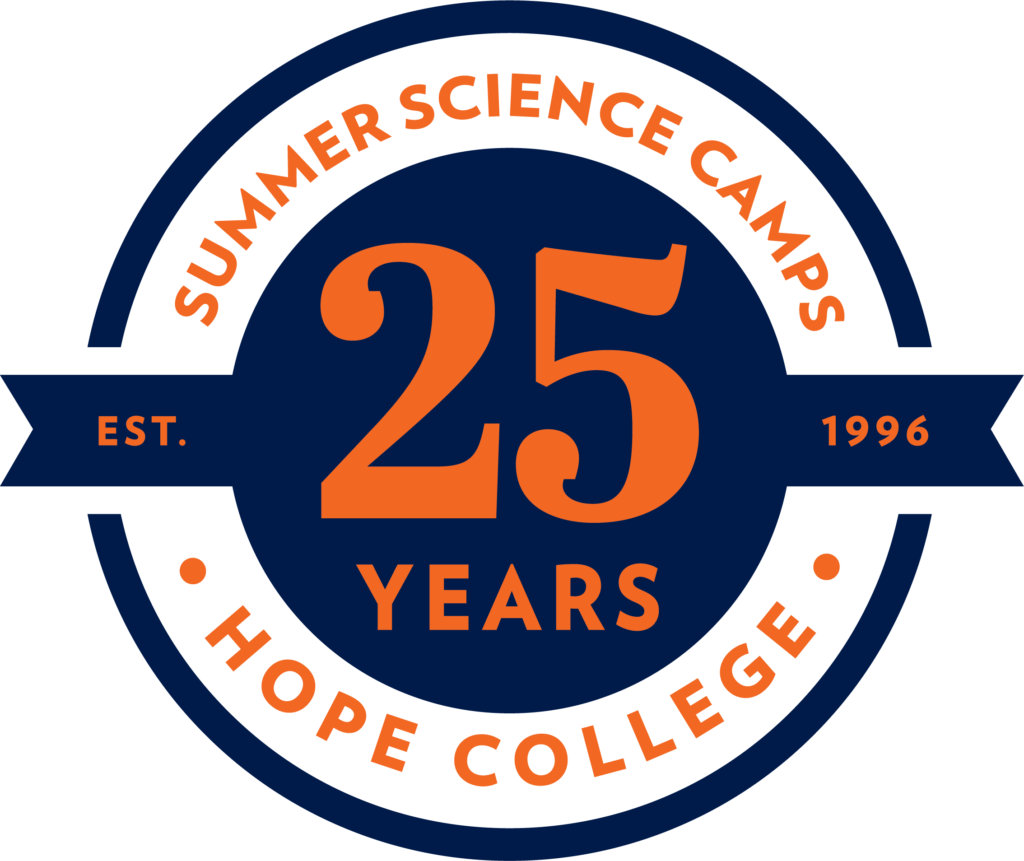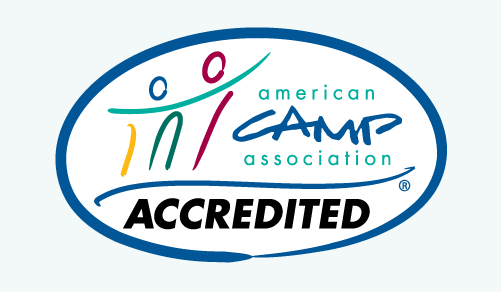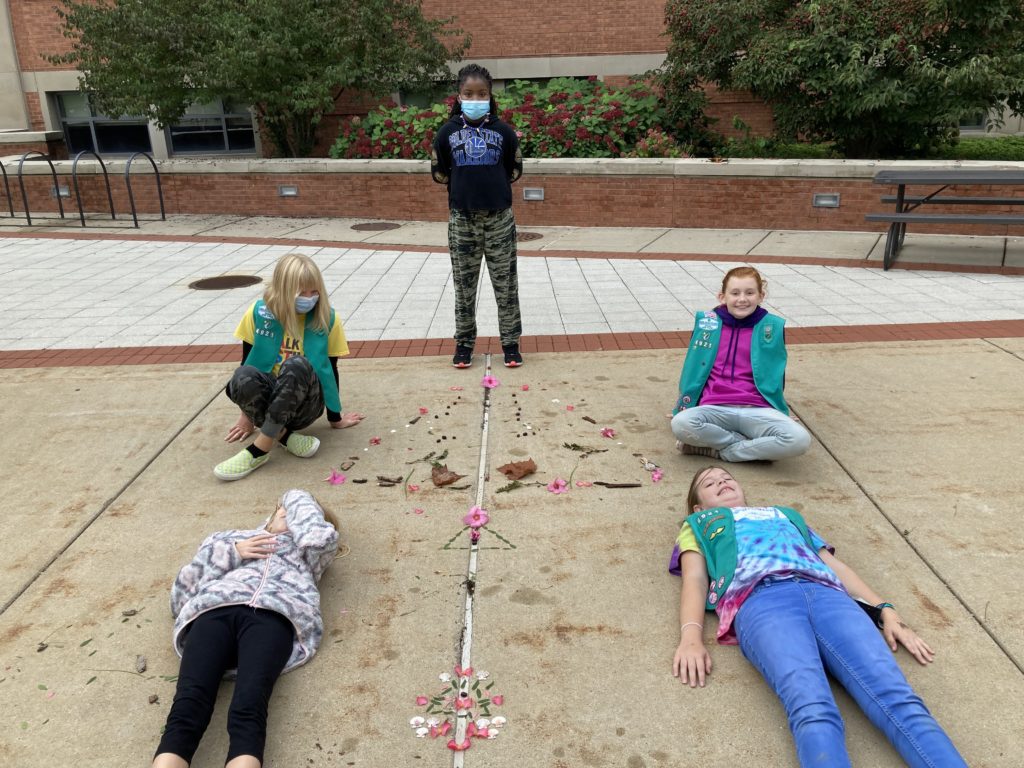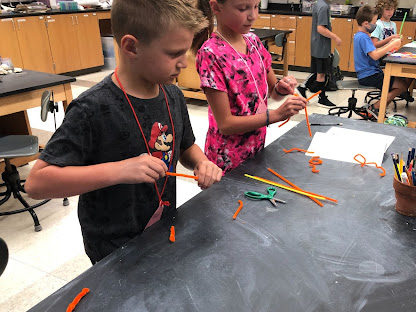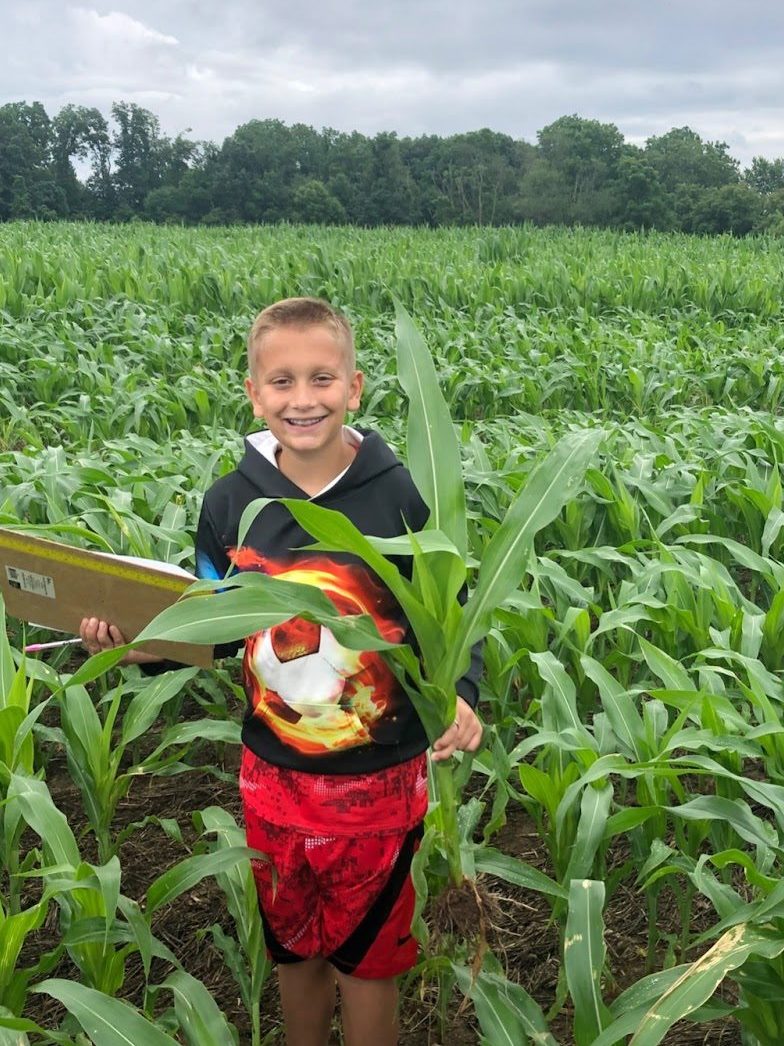Hello Super Scientists! My name is Chloe Smith and I am on staff this summer running camps at ExploreHope. I will be a senior this fall studying Early Childhood Education. This is my first year on staff, and I am excited about what is in store for the summer! It has already been a joy watching campers learn and engage with science in new ways.
I loved kicking off a fun summer of science by leading the Super Science Sampler camp for grades K-2. Super Science Sampler is a unique camp because it offers campers the opportunity to learn about a different subject every day! The topics we cover include: Cool Critters and Crawlies, Prehistoric Planet, Club Vet, Tykes LEGO, and Crazy Chemistry. There were so many wonderful moments from our first week of SSS, but I’ll keep it brief and just highlight a couple!
On Club Vet day, the campers got to take a trip to the VanKley Animal Museum here at Hope. The museum staff taught campers about all of the animals they care for and even let them use a “brave, one finger touch” to pet a few of them! Campers loved hearing stories about each animal’s quirks. They met a sleepy lizard, a temperamental tarantula, and a cuddly guinea pig (wearing a tiara)!
On Tykes LEGO day, campers got to take on the role of engineers while they designed and built cars. It was great watching campers work together to come up with the best design for their car. They then took turns racing their cars outside and cheering each other on. After all, what’s camp without a bit of friendly competition?
I can’t wait to see what the rest of the summer has in store as we welcome new campers each week!


